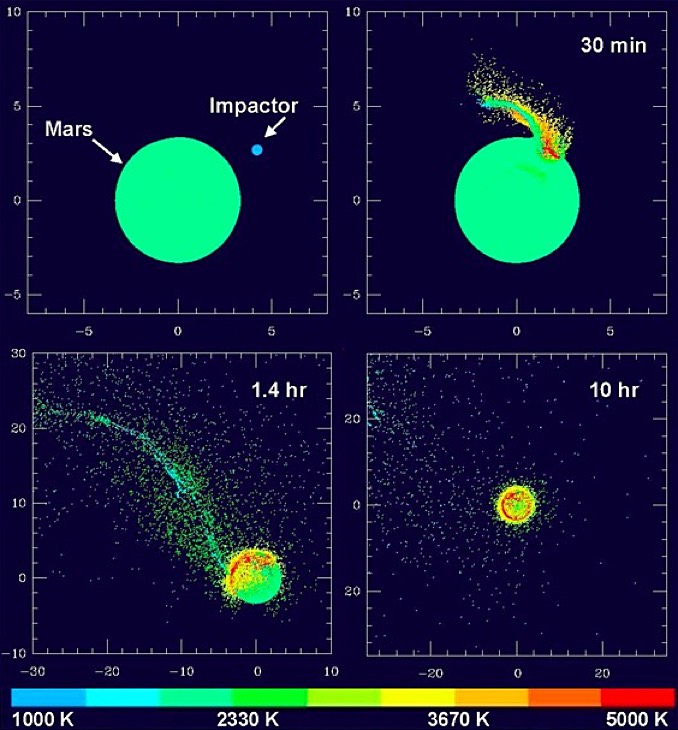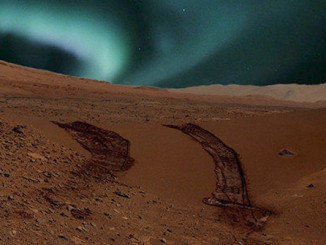
Astronomers have long debated the origins of Mars’ two moons, Phobos and Deimos, arguing they may be captured asteroids or the end result of an ancient ring of debris blasted into space by an impactor. The moons certainly resemble asteroids, but their nearly circular, co-planar orbits are consistent with their formation from an equatorial disk of debris.
Now, scientists at the Southwest Research Institute in San Antonio, Texas, using sophisticated hydrodynamical simulations, have concluded the moons likely resulted from the impact of a body the size of the dwarf worlds Vesta or Ceres rather than a much larger body as many had speculated earlier.
“A key result of the new work is the size of the impactor; we find that a large impactor, similar in size to the largest asteroids Vesta and Ceres, is needed, rather than a giant impactor,” lead author Dr. Robin Canup, an associate vice president in the Southwest Research Institute’s Space Science and Engineering Division, said in a statement.
“The model also predicts that the two moons are derived primarily from material originating in Mars, so their bulk compositions should be similar to that of Mars for most elements,” he added. “However, heating of the ejecta and the low escape velocity from Mars suggests that water vapour would have been lost, implying that the moons will be dry if they formed by impact.””
Earth’s Moon, with a diameter of a bit more than 2,100 miles, may be the result of an impact with a Mars-size body shortly after the birth of the solar system 4.5 billion years ago, blasting out a thick ring of debris that eventually coalesced to form a large satellite. Phobos and Deimos are much smaller – 14 and 7.5 miles wide respectively – and orbit much closer to their parent.
“We used state-of-the-art models to show that a Vesta-to-Ceres-sized impactor can produce a disk consistent with the formation of Mars’ small moons,” said Julien Salmon, an SwRI research scientist. “The outer portions of the disk accumulate into Phobos and Deimos, while the inner portions of the disk accumulate into larger moons that eventually spiral inward and are assimilated into Mars.”
The model indicates that larger impactors would result in more massive inner moons that would prevent the survival of much smaller satellites like Phobos and Deimos.



